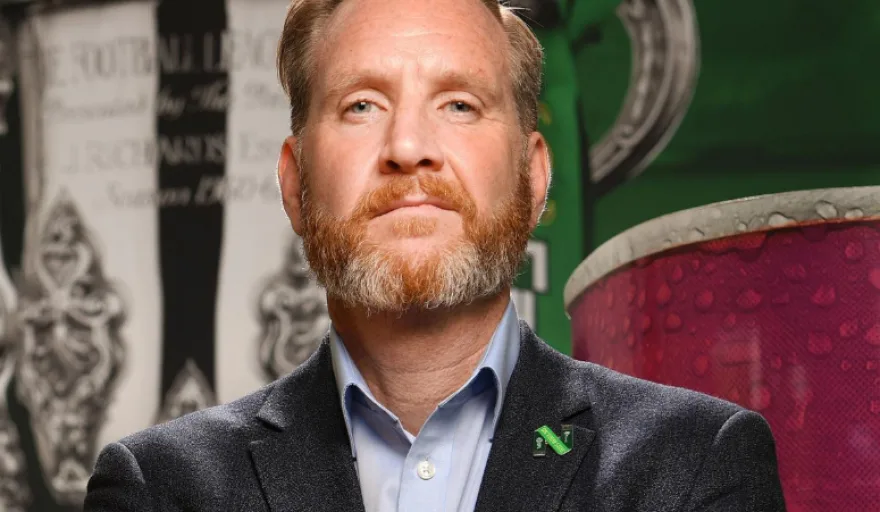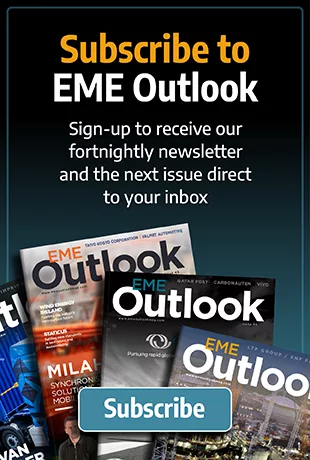We catch up with John Luck, Chief Marketing Officer of Carabao, about challenging the UK energy drink market and taking on global heavyweights.
INTRODUCTION
In 2017 UK consumers drank 669 million litres of energy drink.
In monetary terms, this amounts to expenditure of £1.65 billion on topping up energy levels through the likes of Red Bull, Monster, Lucozade and other brands populating what is an extremely saturated category that occupies significant retail shelf space.
And the trend is only set to continue. According to research by Mordor Intelligence, the period 2019 to 2024 is forecast to deliver an average annual growth rate of 4.3 percent.
So, while the market may be an extremely competitive one, it is open to disruptors to not only take market share from established players, but also expand the category into new audiences.
Indeed, for Thai energy drink giant Carabao, the UK is already proving fertile ground for European expansion. Founded by rockstar and national icon Aed Carabao, the brand is making waves in western markets in no small part to the eccentricity of its marketing campaigns, reflective of the character that founded the company back in 2002.
It is second only to M-150 in its home market and is now taking on the global heavyweights (notably Red Bull) in the UK, with Chief Marketing Officer John Luck leading the branding charge.
“Carabao is intriguing,” he says. “The challenge of making a new energy drink successful in the UK, an already packed market, was appealing to me.
“Around 750 energy drinks have tried and failed to launch here prior to Carabao – the fact we knew something new was needed was the hook that lured me in. I am also a big football fan and at the time I joined in 2016 we sponsored Reading and Chelsea.”
Having graduated with a business degree, Luck’s experience at Littlewood Pools as a graduate in the 1990s exposed him to the power of marketing in the FMCG segment, the introduction of the National Lottery in 1994 proving to be an important career turning point.
“Prior to that, the pools were how people became millionaires overnight,” he recalls. “In order to stay in business, the pools companies committed a lot of resources to reposition their brands and took on marketing experts from FMCG organisations.
“This process got me excited about what marketing can do for a business. The guys I was working with had completely different levels of energy and were people I really identified with, and it led me to my first job in FMCG at Premier Brands (now Premier Foods) with Typhoo Tea.”
Successful stints at Coca-Cola and Duchy Originals later, and Luck is now charged with disrupting the status quo in the UK energy drinks market for Carabao.
He has learned many lessons and honed his approach to marketing along the way, not least an unwavering commitment to knowing the target audience, backed up by an alignment of the entire business behind a common identity.
“In order to be a successful marketeer, you have to talk regularly to your customers and consumers,” he explains. “You have to know the category inside out in order to make your own unique space – consumers will then take notice.
“Once this has been established, you need to align everyone else in the business behind the space you have identified, and from a creative standpoint it is then about creating the most disruptive pieces of brand communication that you can. Why is your brand different? Why should they adopt it? It isn’t rocket science, and no matter what brand you need to talk to the customers and find your own space.”
CHALLENGING ESTABLISHMENTS
And finding its own space in the UK is what Carabao has been doing.
Luck cites data gathered from Nectar, the rewards and points system used by Sainsbury’s, which demonstrates how the Thai firm has been carving its own consumer base in the energy drinks market. For example, 90 percent of its customers are aged over 25, while 43 percent of people purchasing Carabao are entirely new to the category.
“Fortunately, all of our competitors seem to focus their marketing efforts on 18-24-year-old men, which is ironic given that this group of people generally need extra energy the least,” says Luck. “What we have found through talking to people is that the 25-plus age group, men and women, is a wide space that we can target with an energy drink for all adults.”
The product range itself has also been designed to capture a wider audience.
This has involved creating and reformulating drinks in order to overcome two barriers identified by its own research titled ‘Taste of the Nation – Understanding changing consumer attitudes towards energy drinks’, published by Carabao in September 2019.
The study finds that taste and sugar content are two major obstacles preventing either non-consumers of energy drinks from buying them or one-off purchasers from buying regularly.
“We therefore wanted to create energy drinks that taste like soft drinks,” says Luck. “Most people assume that they will taste like Red Bull, perhaps with a vague hint of another added flavour. Some consumers just don’t like that taste, and therefore it stops them from buying energy drinks.
“The Carabao range includes apple and mandarin orange, what we call functional soft drinks – products which taste like a soft drink but have the added benefit of the energy boost. Carbonation also adds a differentiating factor.”
Sugar is another massive talking point, and one which a mass of research suggests will steer the sector in years to come. Indeed, the growth figures cited at the top of the article represent a decline on the double-digit numbers seen a few years ago, the major reason being consumers’ increasing awareness of sugar intake.
Carabao thus only sells low sugar (less than five grams per 100ml) or zero sugar products, something which Luck’s latest campaign showcases in routinely bold fashion.
“Carabao products which have sugar in them have 60 percent less than the likes of Red Bull or Monster, so we’re offering a real choice to consumers who want that energy hit but without the extra sugar,” Luck adds.
LUCK OF THE DRAW
Football is the third major hallmark of Carabao’s endeavours into the UK market.
By sponsoring the likes of Reading and now Chelsea FC, it has allowed the brand to reach a massive target audience of participants and viewers, both in the UK and abroad.
Carabao’s latest foray into football is the partnership it has with the English Football League (EFL) and its premier domestic cup competition, now known as the Carabao Cup. For Luck, this was the perfect opportunity to generate engagement and differentiate once more, namely through the live draws.
“Across everything we do we try to approach marketing from a challenger brand perspective, as Carabao is up against some enormous brands in the UK with huge budgets,” he explains.
“As a new brand our ability to take risks is significantly greater, and so we saw an opportunity with the cup draws to do something a bit differently to build engagement. Previous draws have been held in Thailand, China and Vietnam, have been conducted live on Twitter and have even seen Piers Morgan wearing a Spurs shirt after Arsenal lost to them in the quarter finals last season.”
This season Luck went one better by holding the draw for the first round in a Morrisons supermarket in London.
“Morrisons is an important customer, and so this also provided a chance to deepen our relationship with them and again is something different from a normal cup draw,” continues Luck.
“This has been the most successful draw we’ve made to date for two reasons, the first being the amount of pickup we received. We always measure the success of our activities in terms of the PR value we received and the ratio of that value to spend – the ratio we got from the Morrisons draw was 107 to one, which is a huge return.
“Second, this helped us to deliver some of our key messages. We want to make the Carabao Cup competition as accessible as possible to people, and if you went to the store in Colindale you would have seen hundreds of fans gathered in their team colours to meet former pros John Barnes and Ray Parlour.”
With more ideas up its sleeve for future draws, Carabao continues to work closely with the EFL to innovate new concepts and ways of engaging football fans.
For the Chief Marketing Officer, this freedom to explore and push the boundaries is what he believes will allow the brand to establish itself further in both the UK and Europe more widely, success in the former seen as key to delivering growth further afield.
A major part of this will be capturing what Luck calls the ‘for everybody’ space, continuing to draw more consumers into the energy drink category with its low and zero sugar offerings. And he will be allowed to impart his own creative stamp on the process, something which may not have been as possible in his previous marketing roles.
He concludes: “One of the things I love about Carabao versus working for Coca-Cola, for example, is that from a creative standpoint there are far fewer people in the decision-making chain.
“At the giant companies, there are lots and lots of people who have a point of view on everything and what a piece of branded communication should look like. At Carabao we can intuitively take to market what we believe is the right message, look and feel – from a personal point of view it is incredibly liberating.”



































